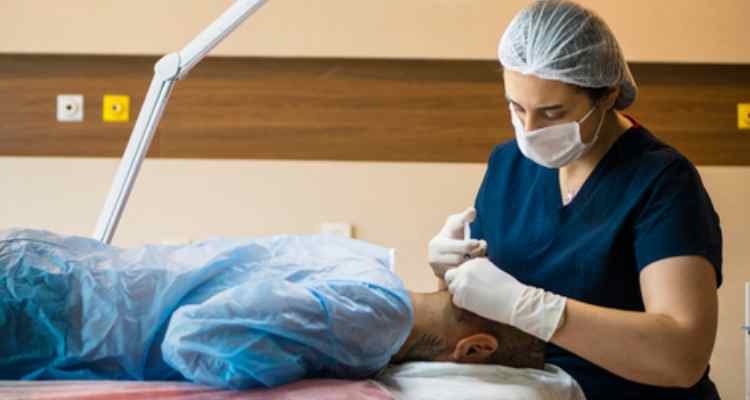Hair loss can be a distressing experience for both men and women, affecting self-confidence and overall well-being. Thankfully, advancements in medical technology have led to effective hair restoration procedures. Two popular methods for hair transplants are Follicular Unit Extraction (FUE) and Follicular Unit Transplantation (FUT), which can be completed at any reputable hair clinic near you.
Find out about these techniques in comprehensive detail and understand how they work before you get any procedure done.
1.Introduction to Hair Transplants
Hair transplants are surgical procedures that involve the redistribution of hair follicles from areas of abundant hair growth to areas experiencing hair loss or thinning. The goal is to achieve natural-looking and permanent hair restoration. Both FUE and FUT are widely used and have their own unique approaches.
2.Follicular Unit Extraction (FUE)
Follicular Unit Extraction (FUE) is a minimally invasive hair transplant technique that involves the extraction of individual hair follicles from the donor area, typically the back or sides of the scalp. Here’s how the FUE process works:
a. Donor Area Preparation: The donor area is trimmed to a short length to facilitate the extraction process. Local anesthesia is administered to ensure the patient’s comfort during the procedure.
b. Individual Follicle Extraction: Using a small, specialized punch tool or a robotic system, individual hair follicles are carefully extracted from the donor area. The extraction process leaves tiny, almost invisible, circular scars that heal quickly and are easily concealed by surrounding hair.
c. Recipient Area Creation: Once the follicles are extracted, small incisions are made in the recipient area where hair loss or thinning has occurred. The surgeon strategically places the extracted follicles into these tiny incisions, ensuring a natural hairline and optimal density.
d. Post-Transplant Care: After the procedure, the patient is provided with post-transplant care instructions. The transplanted hair follicles typically shed within a few weeks but then start regrowing new hair within a few months. The results continue to improve over time, with full growth visible within a year.
3.Follicular Unit Transplantation (FUT)
Follicular Unit Transplantation (FUT), also known as strip harvesting, is another hair transplant technique that involves the removal of a strip of scalp from the donor area. The strip is then dissected into individual follicular units for transplantation. Here’s an overview of the FUT procedure:
a. Donor Area Preparation: Similar to FUE, the donor area is trimmed, and local anesthesia is administered to ensure patient comfort.
b. Strip Harvesting: A thin strip of scalp, typically from the back or sides of the head, is surgically removed. The incision is then closed with sutures or staples, leaving a linear scar that can be concealed by the surrounding hair.
c. Follicular Unit Dissection: The strip of the scalp is carefully dissected into individual follicular units under a microscope. These units consist of one to four hair follicles.
d. Recipient Area Creation and Transplantation: Just like in FUE, small incisions are made in the recipient area, and the follicular units are transplanted into these incisions. The surgeon ensures a natural hairline and appropriate distribution for optimal results.
e. Post-Transplant Care: After the FUT procedure, the patient receives post-transplant care instructions. Similar to FUE, the transplanted hair sheds within a few weeks but starts regrowing within a few months. The final results are visible within a year.
4.Choosing Between FUE and FUT
The choice between FUE and FUT depends on various factors, including the patient’s hair loss pattern, donor area characteristics, and individual preferences. Here are some considerations to help you make an informed decision:
a. Donor Area: FUE is suitable for patients with a sufficient supply of healthy hair follicles in the donor area. It is especially beneficial for individuals who prefer to keep their hair short, as the tiny scars are easily concealed. On the other hand, FUT may be a better option for patients with a larger extent of hair loss or those who have a denser donor area, as it allows for the transplantation of a higher number of grafts.
b. Scarring: FUE leaves small, circular scars that are less noticeable and easier to hide, while FUT leaves a linear scar. If the potential visibility of the scar is a concern for you, FUE may be the preferred choice.
c. Recovery Time: FUE generally has a quicker recovery time, as it involves minimal incisions and no sutures. Patients usually experience minimal discomfort and can resume their regular activities within a few days. FUT, on the other hand, requires sutures and a more extended healing period due to the larger incision made during strip harvesting.
d. Graft Yield: FUT often yields a higher number of grafts compared to FUE in a single session, as the strip of scalp harvested in FUT contains a more significant number of hair follicles. This can be advantageous for patients who require a more significant number of grafts to achieve the desired hair density.
e. Cost: The cost of FUE and FUT can vary depending on factors such as the number of grafts required and the geographical location of the clinic. Generally, FUE tends to be more expensive due to the labour-intensive nature of the procedure.
Ultimately, the decision between FUE and FUT should be made in consultation with a qualified hair transplant surgeon at your local hair clinic. They will evaluate your specific hair loss pattern, donor area characteristics, and personal preferences to recommend the most suitable technique for your individual needs.
Conclusion
FUE and FUT are two popular techniques for hair transplants, each with its own advantages and considerations. FUE is a minimally invasive approach that involves extracting individual hair follicles, while FUT involves strip harvesting and dissecting follicular units. Factors such as donor area characteristics, scarring concerns, recovery time, graft yield, and cost should be considered when deciding betwe en the two techniques. Consulting with a skilled hair transplant surgeon will help you make an informed choice and achieve optimal results in your hair restoration journey.

